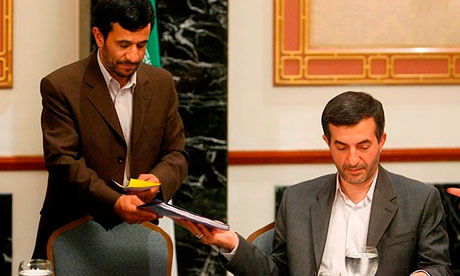Ira Cohen obituary | Art and design | The Guardian
Ira Cohen, who has died of renal failure aged 76, participated in the 1960s artistic counterculture as a poet, publisher, film-maker and raconteur. In the middle of the decade, he took up photographyseriously. At his loft in Jefferson Street, New York, Cohen built a chamber with walls and ceilings made from sheets of Mylar, a reflective polyester film. Inside this chamber, he took portraits of William Burroughs, Jimi Hendrix, Alejandro Jodorowsky and the steady stream of hipsters who visited the loft.
Rather than photograph his subjects directly, he took pictures of their distorted reflections on the chamber’s walls and ceiling. The surrealistic and psychedelic results were described by Hendrix as “like looking through butterfly wings”. The photographer and film-maker Gerard Malanga called the Mylar chamber “a kaleidoscope where the reflections being photographed constantly changed”. Life magazine, in its final issue of the 1960s, praised how close Cohen’s photographs came to “explaining the euphoric distortions of hallucinogenics”.
Cohen was born to deaf parents, Lester and Faye, in the Bronx, New York. He learned sign language before he could read and write. He attended Horace Mann school and Cornell University, where he took writing classes from Vladimir Nabokov. At Columbia University, he became involved in the jazz and avant-garde scenes of New York’s Lower East Side.
In 1961 he boarded a freighter to Morocco where he spent time with Burroughs and the writers Brion Gysin and Paul Bowles. He embarked on publishing a literary magazine, Gnaoua, centred on the Beat scene in Tangier. In 1964, the only volume of Gnaoua was published, with contributions including a preview of Burroughs’s cut-up novel Nova Express, photographs by Jack Smith and Allen Ginsberg‘s reflections on totalitarianism. A copy of Gnaoua can be seen on the cover of Bob Dylan‘s album Bringing it All Back Home.
 Cohen embodied a bohemian intent on doing his own thing. Photograph: Ira Landgarten
Cohen embodied a bohemian intent on doing his own thing. Photograph: Ira Landgarten
In 1966, having returned to New York, Cohen edited and published – under the nom de plume Panama Rose – The Hashish Cookbook, with recipes ranging from cakes and puddings to soups and drinks. He also produced Jilala, an album of Moroccan trance music.
Cohen was a pioneer of the loft scene in the Lower East Side, where the low rents and vast spaces attracted artists, musicians, actors and writers. Happenings were organised in lofts, and he became part of the burgeoning underground which was successfully commercialised byAndy Warhol. Cohen himself was never able to deal with art or writing in any commercial way. He advocated that artists and poets should have patrons and be supported.
One story typifies Cohen’s haphazard luck. Having disturbed a burglar at his loft, he struck up a conversation, explaining the Mylar chamber and his lifestyle. The burglar left but soon returned with a Bolex 16mm film camera and a box of prism lenses, which he sold to Cohen for almost nothing.
In 1968, using the Bolex, Cohen made the film The Invasion of Thunderbolt Pagoda, a psychedelic romp that features the Mylar chamber and scenes inspired by the work of Julian Beck’s Living Theatre company. He also produced a documentary about the Living Theatre’s US tour of the play Paradise Now, which involved audience participation and scenes of mass nudity, leading to arrests for indecency.
In 1970 Cohen’s Mylar chamber photographs were used on the cover of the album Twelve Dreams of Dr Sardonicus by the psychedelic rock band Spirit and on the jacket of the first novel by Burroughs’s son, William Jr, entitled Speed. Cohen then departed to Nepal with the Living Theatre actor Petra Vogt and began a small press, Bardo Matrix, publishing books and broadsheets on handmade rice paper, including works by Bowles, Gregory Corso and Angus MacLise. He also published his own poetry, including the collections Gilded Splinters and Poems from the Cosmic Crypt.
Cohen later directed the film Kings With Straw Mats (1998), a documentary about the Kumbh Mela gathering in India, and released the album The Majoon Traveller, featuring the music of MacLise, Ornette Coleman and Master Musicians of Joujouka, mixed with his readings. In his later years, he was feted by a new generation of the counterculture, as The Invasion of Thunderbolt Pagoda and Paradise Now were released on DVD. In 2006, the Whitney Museum of American Art’s biennial featured his photographs of Smith.
I first met Cohen in 1992 when he participated in a Burroughs and Gysin exhibition in Dublin, displaying his Mylar images and other work. He took a central role in the event, hosting daily readings. When it came to publishing, he was enthusiastic and generous. On being asked for a contribution for a book, he was likely to also offer a piece by Bowles or Anne Waldman which had been left over from one of the many publications he had edited. In his personal attire (such as his long kaftan and bead-strewn beard) and his manner, he always embodied a bohemian intent on doing his own thing.
In the mid-1950s he married Arlene Bond, with whom he had two children. He later married Carolina Gosselin, with whom he had a daughter. Both marriages ended in divorce. He also had a son from another relationship. He is survived by his children and his sister, Janice.
• Ira Cohen, photographer, poet, publisher and film-maker, born 3 February 1935; died 25 April 2011







